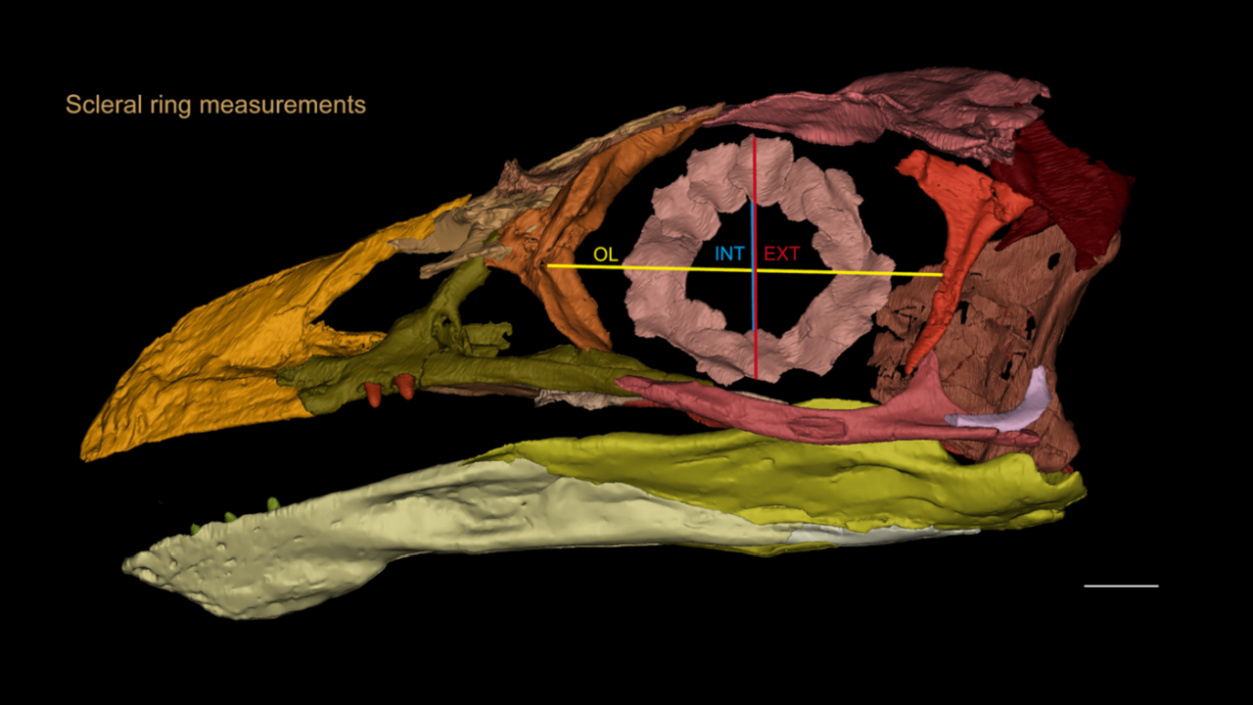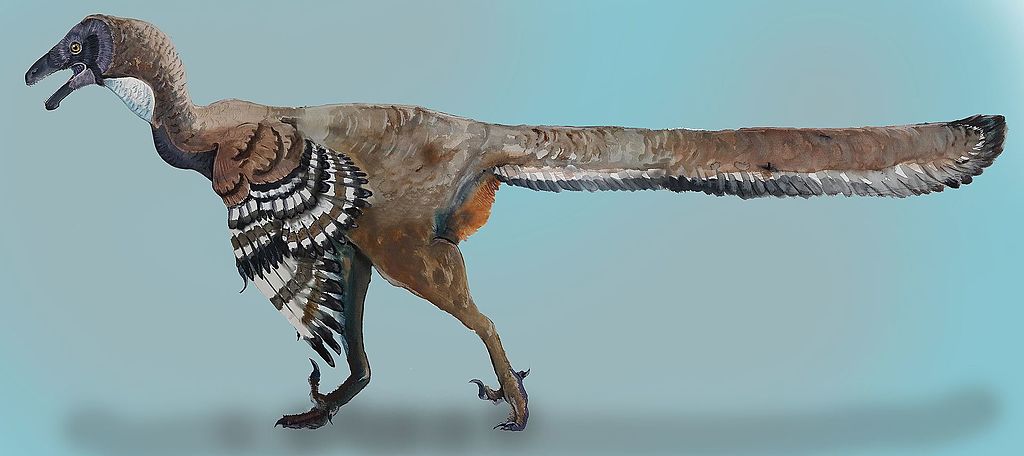During a new research, they digitally reconstructed in 3 dimensions Jiholornes The remains of his skull, which, although many details have been preserved, turned into a pasty during its fossilization. Based on this reconstruction, an international research group has now prepared an analysis that collects the lifestyle and characteristics of the former animal, which Chicago turned Field Museum mentioned. The brain structure and eyes of the ancient bird were especially revealing.
“The Jiholornes Jingmaye O’Connor, head of the Field Museum’s collection of prehistoric reptile fossils, said, Journal of Zoology of the Linnian Society One of the authors of a study published in a specialized journal. “For the first time, our study shows what this bird’s brain might be like, and that’s a very exciting prospect.”
One JiholornesThe fossil is in the Beijing Museum of Natural History
Source: Wikimedia Commons
The researchers selected the best preserved specimens from among the fossils of Chinese origin, although they are somewhat flat, but otherwise intact. “It was a serious task to choose one among the hundreds of fossils that would fulfill the purpose of our investigations, because prior to the survey it was impossible to know if we would find the data we were looking for in it. Including,” said Han Hu, a specialist at Oxford University who led the research. “Scanning skulls with high quality costs so much, it was not possible to scan them all and choose the best one afterwards”. Finally, he chose a skull that was largely intact and survived separate from the rest of the skeleton. The fact that the skull was originally separated from the body improves the quality of Surveying, where a smaller surface area must be measured, and the results are more detailed.In this case, the specialist made a very good choice, since a lot of previously unknown data was obtained during the work.
“The bones were arranged like flakes at the bottom of the bag: they weren’t completely crushed, but they were squeezed together, which is why we were able to make a CT scan,” O’Connor added. The researcher said that with the 3D data obtained, it was possible to reconstruct the shape of the ancient bird’s skull. In this way, the experts were able to see many details that had not been seen before, and it was even possible to deduce certain characteristics of the brain from them.
This is what Jeholornis might look like, according to an artistic reconstruction based on his bone remains.
Source: Wikimedia Commons
Although the brain, like the soft parts in general, does not survive, the brains of dinosaurs and birds also fit neatly into their skulls, so by knowing the shape and dimensions of the skull, it is possible to infer the brain as well. Let’s think of something like the fact that the shape and size of the glove reveal the characteristics of the hand. Since certain parts of the brain remain in the same places over millions of years, it is possible to infer from the current brain structure where, for example, the area of the brain responsible for smell was present in the ancient bird (these brain areas are located in the same place from the frog to the The human).
Tests revealed that a Jiholornes In his case, the area above the nose responsible for the initial processing of smell (bulbus olfactorius) was larger than in today’s birds, and this indicates that smell was more important to him than modern birds. It is also easy to understand whether it is another file, a file Recent search result Also taken into account: this bird was the first known fruit eater. Since the fruit emits many volatile substances during the ripening process, it is easy to understand that its sensing helped the bird find food.
In addition to smelling Jiholornes We also got to know his vision better: based on the reconstruction of the eye-ring bones, the ancient bird would have led a diurnal lifestyle. The eye ring indicates the size of the animal’s eyes, and this is closely related to its diurnal or nocturnal lifestyle. This data is Jiholornes By his past lifestyle, they also indicate the role he played in the ecosystem at that time.
Plus, of course, it also reveals a lot about the evolution of birds: it wasn’t just a straight path of growth, it was something much more complex. The Jiholornes It differed not only from the birds of dinosaurs or the birds of today, but also from the ancient birds of that time. He lived at an important evolutionary moment, in the period when the dinosaur transition began, and thus was crucial to the development of the role birds play today.













































